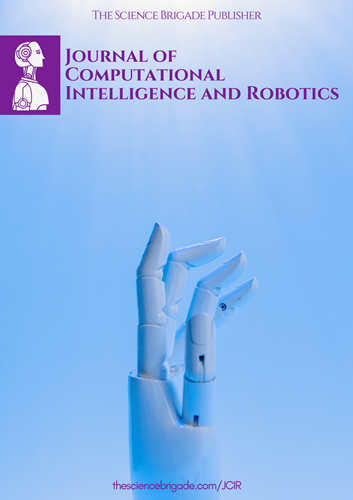AI Arms Races: Implications for Global Stability
Keywords:
Artificial Intelligence, Arms Races, Global Stability, Arms Control, Military EthicsAbstract
This study explores the emerging impact of artificial intelligence (AI) technologies on global military dynamics, focusing on how the adoption of AI systems in the defense domain can catalyze new arms races. The implications of these trends for global stability are assessed, identifying specific risks associated with escalation, strategic instability, and the erosion of international norms. Finally, governance and arms control strategies designed to mitigate these risks in the context of international security are proposed.
The integration of artificial intelligence (AI) technologies into military arsenals has ushered in a new era of arms races, with profound implications for global stability. This article examines how the adoption of AI in military applications is redefining defense strategies, accelerating weapons competitions, and posing unique challenges to international security. Through multidisciplinary analysis, risks of escalation and strategic instability are explored, and a framework for governance and arms control adapted to the AI era is proposed.
References
Sarkin, J. J., & Sotoudehfar, S. (2024). Artificial intelligence and arms races in the Middle East: the evolution of technology and its implications for regional and international security. Defense & Security Analysis, 1-23.
Sandels, C. M. B. (2020). The beginning of Artificial Intelligence arms race: A China-USA security dilemma case study (master’s thesis, Universidade de Évora).
Na’inna, A. M., & Anti-Dwanso, V. (2022). Arms race in the 21st century: consequences and mitigating measures. Global Journal of Social Sciences, 21(2), 45-76.
Kühn, U. (2023). Strategic Stability in the 21st Century: An Introduction. Journal for Peace and Nuclear Disarmament, 6(1), 1-8.
Steff, R. (2023). Artificial intelligence and the future of warfare: the USA, China, and strategic stability: by James Johnson, Manchester: Manchester University Press, 2021, $100.20, 240 pp., ISBN: 1526145057.
Steff, R. (2023). Artificial intelligence and the future of warfare: the USA, China, and strategic stability: by James Johnson, Manchester: Manchester University Press, 2021, $100.20, 240 pp., ISBN: 1526145057.
Carayannis, E. G., & Draper, J. (2023). Optimising peace through a Universal Global Peace Treaty to constrain the risk of war from a militarised artificial superintelligence. AI & society, 38(6), 2679-2692.
Williams, H. (2021). Asymmetric arms control and strategic stability: Scenarios for limiting hypersonic glide vehicles. In Emerging Technologies and International Stability (pp. 195-219). Routledge.
Maas, M. M. (2019). Innovation-proof global governance for military artificial intelligence? How I learned to stop worrying, and love the bot. Journal of International Humanitarian Legal Studies, 10(1), 129-157.
Rickli, J. M., & Mantellassi, F. (2023). Artificial intelligence in warfare: military uses of AI and their international security implications. In The AI wave in defence innovation (pp. 12-36). Routledge.
Scientists, A. (2018). 11. The destabilizing prospects of artificial intelligence for nuclear strategy, deterrence, and stability.
Bega, M. (2023). The New Arms Race between China and the US: A Comparative Analysis of AI-Powered Military and Economic Pursuits. Europolity: Continuity & Change Eur. Governance, 17, 75.
Hunter, L. Y., Albert, C. D., Henningan, C., & Rutland, J. (2023). The military application of artificial intelligence technology in the United States, China, and Russia and the implications for global security. Defense & Security Analysis, 39(2), 207-232.
Shahzad, K., Anwar, A., & Waqas, A. (2023). The Impact of Artificial Intelligence on Future Warfare and Its Implications for International Security. Asian Innovative Journal of Social Sciences and Humanities, 7(3).
Dahab, G. O. (2019). The weaponization of artificial intelligence (AI) and its implications on the security dilemma between states: could it create a situation like" mutually assured destruction"(MAD).
Kramskyi, S., Guo, X., Chmutova, I., Kryvobok, K., & Lozova, T. (2024). The race for global leadership and its risks for world instability: Technologies of controlling and mitigation. Research Journal in Advanced Humanities, 5(1), 178-191.
Isard, W. (1989). Arms races, arms control, and conflict analysis: contributions from peace science and peace economics. Cambridge University Press.
Harris, B. (2022). Making the World Safer for Competition: Racing Theory and Why States Engage in Arms Control.
Scharre, P. (2021). Debunking the AI arms race theory (Summer 2021).
Wright, N. (2019). Artificial Intelligence’s Three Bundles of Challenges for the Global Order. Artificial Intelligence, China, Russia, and the Global Order.
Downloads
Published
How to Cite
Issue
Section
License

This work is licensed under a Creative Commons Attribution-NonCommercial-ShareAlike 4.0 International License.
License Terms
Ownership and Licensing:
Authors of this research paper submitted to the journal owned and operated by The Science Brigade Group retain the copyright of their work while granting the journal certain rights. Authors maintain ownership of the copyright and have granted the journal a right of first publication. Simultaneously, authors agreed to license their research papers under the Creative Commons Attribution-NonCommercial-ShareAlike 4.0 International (CC BY-NC-SA 4.0) License.
License Permissions:
Under the CC BY-NC-SA 4.0 License, others are permitted to share and adapt the work, as long as proper attribution is given to the authors and acknowledgement is made of the initial publication in the Journal. This license allows for the broad dissemination and utilization of research papers.
Additional Distribution Arrangements:
Authors are free to enter into separate contractual arrangements for the non-exclusive distribution of the journal's published version of the work. This may include posting the work to institutional repositories, publishing it in journals or books, or other forms of dissemination. In such cases, authors are requested to acknowledge the initial publication of the work in this Journal.
Online Posting:
Authors are encouraged to share their work online, including in institutional repositories, disciplinary repositories, or on their personal websites. This permission applies both prior to and during the submission process to the Journal. Online sharing enhances the visibility and accessibility of the research papers.
Responsibility and Liability:
Authors are responsible for ensuring that their research papers do not infringe upon the copyright, privacy, or other rights of any third party. The Science Brigade Publishers disclaim any liability or responsibility for any copyright infringement or violation of third-party rights in the research papers.




